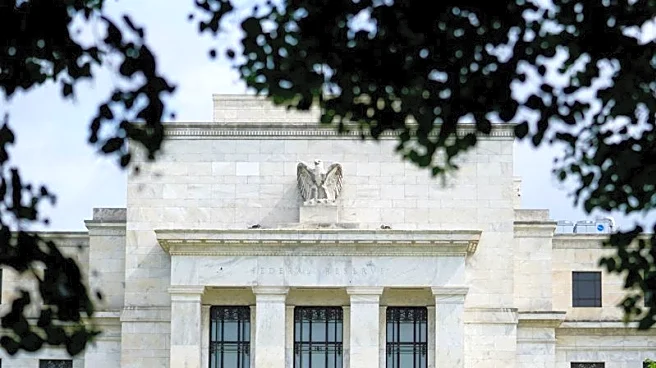What's Happening?
The Federal Reserve has unveiled a revised plan to relax capital requirements for Wall Street's largest banks, significantly reducing the proposed increases from a Biden-era proposal. The new plan suggests
a capital increase of 3% to 7% for most big banks, a substantial decrease from the 19% raise initially proposed under the Basel III standards. This move has prompted strong opposition from Wall Street banks, which argue that the changes could tighten lending and affect other business lines. The banks have been actively lobbying regulators to modify the draft rules. The Federal Reserve has not commented on the report, and Reuters has not independently verified the information.
Why It's Important?
The proposed changes to capital requirements are significant for the U.S. banking industry, as they could impact lending practices and financial stability. Lower capital requirements may allow banks to increase lending, potentially boosting economic activity. However, it also raises concerns about the resilience of banks in the face of financial crises. The pushback from Wall Street indicates the industry's apprehension about tighter regulations affecting profitability and operational flexibility. The outcome of this proposal could influence future regulatory approaches and the balance between financial stability and economic growth.
What's Next?
The Federal Reserve's proposal is likely to undergo further scrutiny and debate among regulators, industry stakeholders, and policymakers. Banks will continue lobbying efforts to influence the final decision, aiming to ensure favorable conditions for their operations. The regulatory landscape may see adjustments based on feedback from the banking sector and economic indicators. The decision will have implications for the broader financial system, potentially affecting lending rates, investment strategies, and economic growth.













